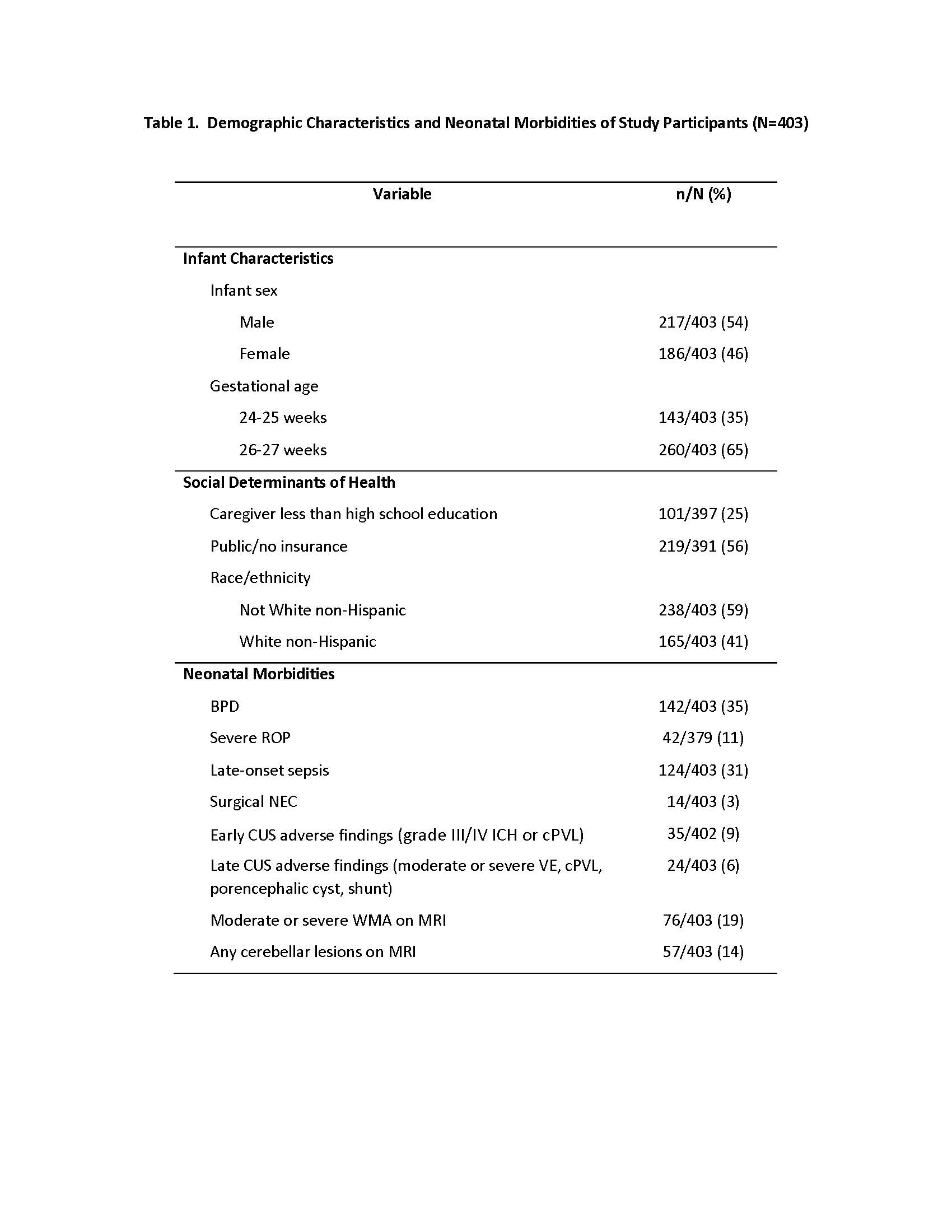Neonatology
Session: Neonatal Follow-up 2
507 - Is parent-reported quality of life at school age among children born extremely preterm associated with social determinants of health, neonatal morbidities, and developmental outcomes?
Saturday, May 4, 2024
3:30 PM - 6:00 PM ET
Poster Number: 507
Publication Number: 507.1094
Publication Number: 507.1094
- JL
Jean R. Lowe, PhD (she/her/hers)
Professor of Pediatrics
University of New Mexico School of Medicine
Albuquerque, New Mexico, United States
Presenting Author(s)
Background: Children born extremely preterm are at increased risk of perinatal morbidities (e.g., BPD, ROP, sepsis, and brain injury), as well as adverse social determinants of health (SDOH) as measured by maternal education, race/ethnicity, and medical insurance. These risks may negatively affect school age development.
Objective: We hypothesized that children born extremely preterm with a higher number of neonatal medical morbidities and those with more factors related to SDOH would score lower on the Pediatric Quality of Life (PedsQL) scale. We also postulated that lower scores on the PedsQL subscales would correlate with lower scores on neurodevelopmental scales (Wechsler Intelligence Scale for Children-4 (WISC-4) subscales and Woodcock Johnson-III (WJ-III) test of early reading and math).
Design/Methods: This was a secondary analysis of the SUPPORT Neuro School age follow-up study (Hintz et al 2018). Children, born 24 to 27+6/7 weeks' gestation, were assessed at 6-7 years with the WISC-4, WJ-III, and PedsQL parent questionnaire. Demographics are provided in Table 1. T-tests were used to examine differences in mean PedsQL scores by neonatal morbidities and SDOH (Table 2). Mixed effects models were fit to examine the relationship between PedsQL scores and developmental test scores after adjusting for neonatal morbidities and SDOH that were significant in the bivariate comparisons.
Results: Several perinatal morbidities correlated with lower PedsQL scores, particularly related to physical health, including ROP, late onset sepsis, early CUS adverse findings, late CUS adverse findings, and moderate or severe WMA on MRI (Table 2). Of the SDOH factors, children with public or no insurance had lower PedsQL scores related to physical health whereas there was no association with other SDOH factors. PedsQL physical health, psychosocial health, and total scores were positively associated with WISC-IV subscales and PedsQL psychosocial health and total scores were positively associated with WJ-III Letter-Word Identification scores. (Table 3).
Conclusion(s): Parent-reported quality of life for children born extremely preterm in this cohort was significantly associated with perinatal morbidities and neurodevelopmental outcome at school age. Assessing this factor in combination with neonatal morbidities and SDOH could improve identification of children at high risk for school age difficulties.

.jpg)
.jpg)
